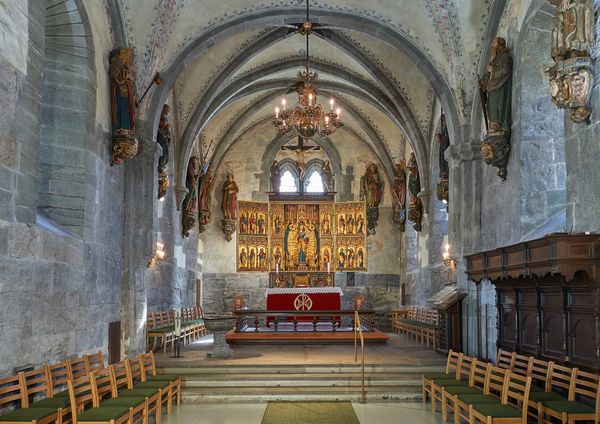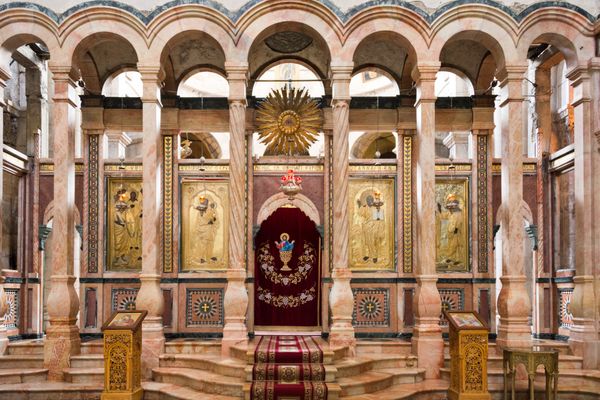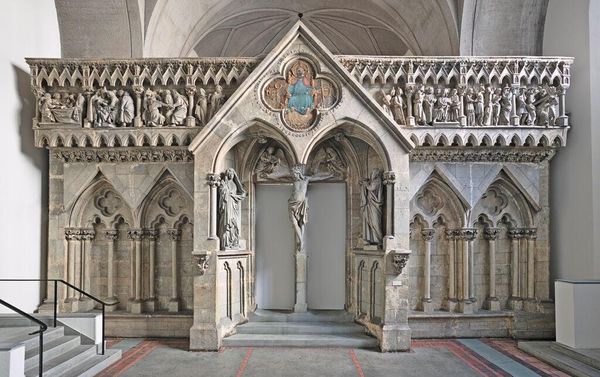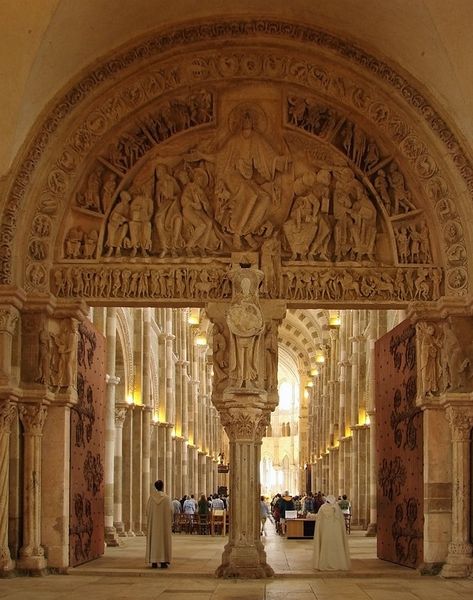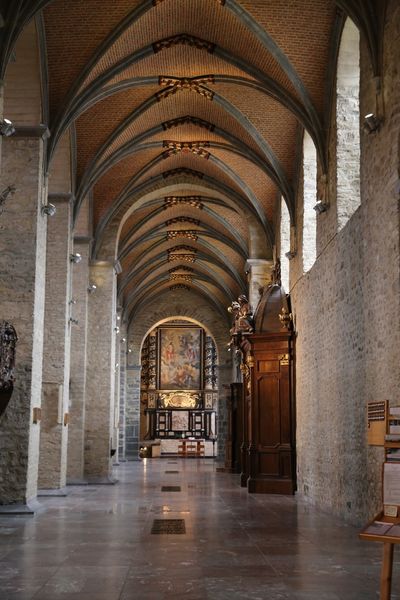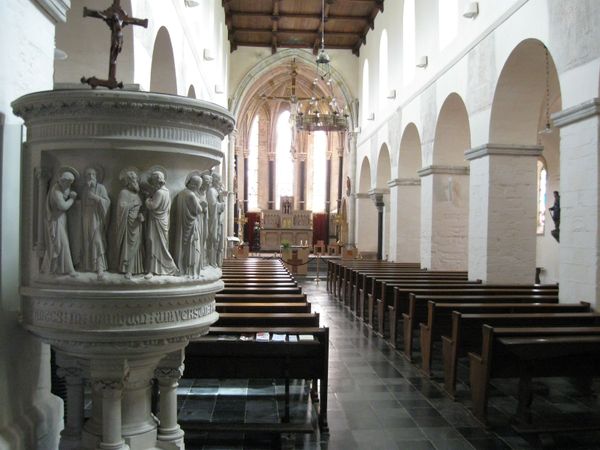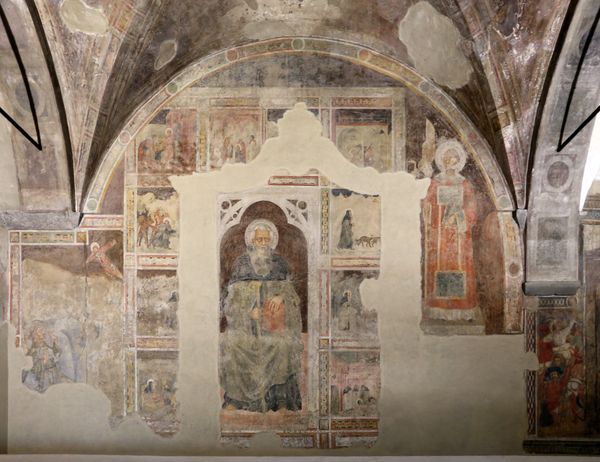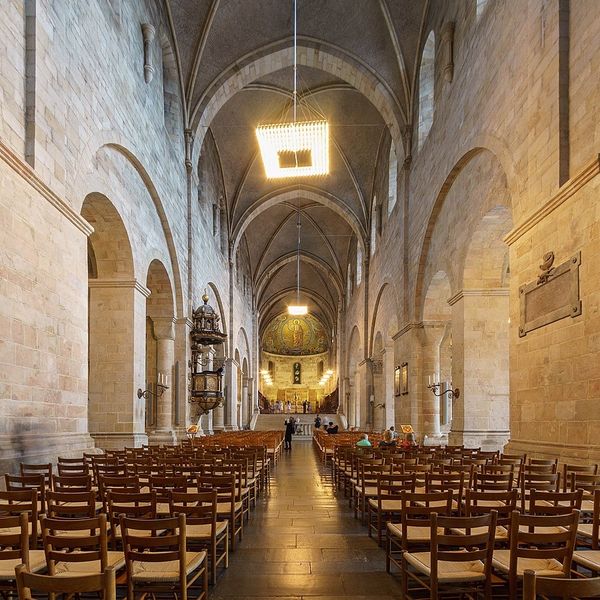
fresco, mural, architecture
#
medieval
#
holy-places
#
cultural heritage
#
historic architecture
#
fresco
#
traditional architecture
#
romanesque
#
arch
#
history-painting
#
mural
#
architecture
#
historical building
Copyright: Public domain
Editor: Here we have a look inside the Basilica of the Holy Blood in Bruges, Belgium, constructed around 1157. The architecture and frescos create such an enveloping and ornate experience. What’s your perspective on its power as an image? Curator: The basilica, a reliquary, isn’t merely a structure. It’s a vessel laden with symbolism and the weight of history. Think of the architectural elements: the arches, the placement of windows, the ascending tiers. Each is a deliberate echo of the divine order, reflecting heaven's structure on earth. Look at the murals - do you recognize their style? Editor: They look like a combination of styles, especially in the lines and color usage. I’d say it’s an approach rooted in Romanesque traditions. Curator: Exactly. It tells us much about the period. But it's not *just* Romanesque; there are later influences here as well. The basilica has evolved, hasn't it? Reflecting centuries of devotion, political maneuvering, artistic tastes, and social changes. The ‘holy blood’ relic would certainly imbue every surface with greater meaning and narrative presence, wouldn’t you agree? Editor: It does give another meaning. It makes me think about how relics and spaces affect viewers. How does the imagery speak to memory and continuity? Curator: Consider the colours, even, handed down through generations. How architecture and art, here melded so completely, creates its own collective unconscious. Does this visual vocabulary preserve, and perhaps even alter, our shared memories of faith and history? Editor: So it's not just a building, but an active participant in shaping cultural memory? Curator: Precisely. And how its very stones and surfaces become imbued with psychological weight. What do you feel when you imagine yourself standing inside? Editor: It's incredibly powerful to consider how architecture holds memory. It’s not only what it depicts, but what it evokes through design, history, and shared symbolism.
Comments
No comments
Be the first to comment and join the conversation on the ultimate creative platform.

